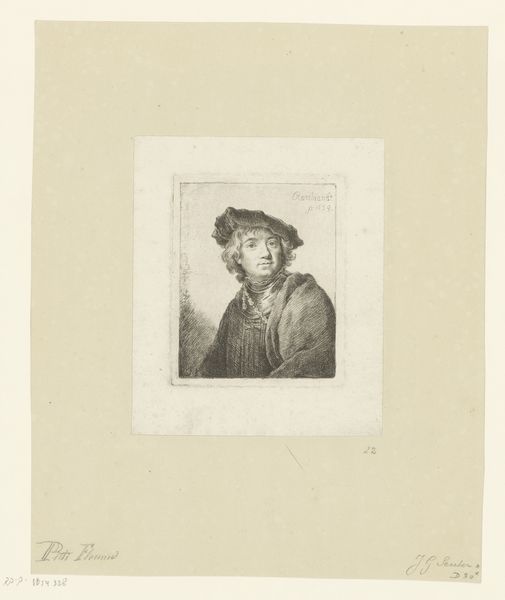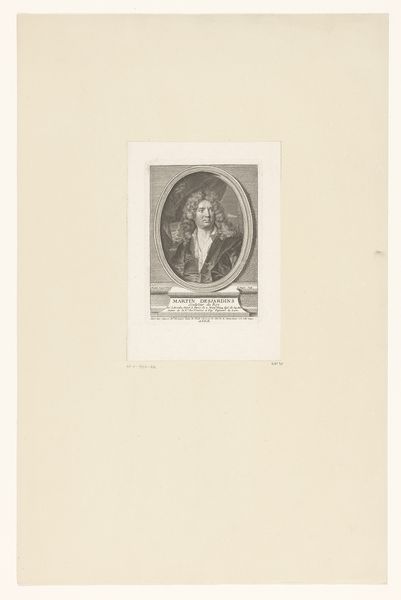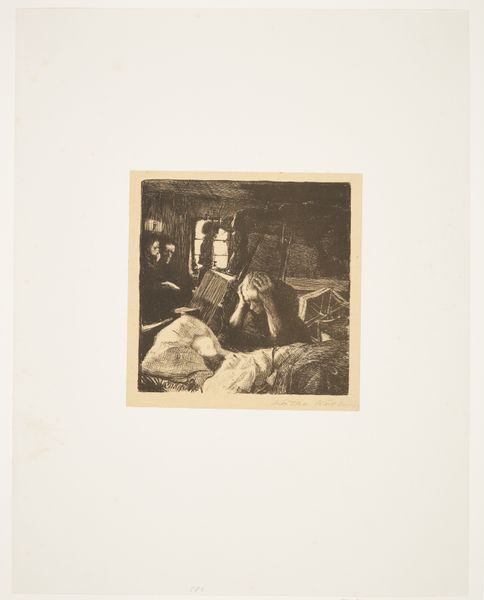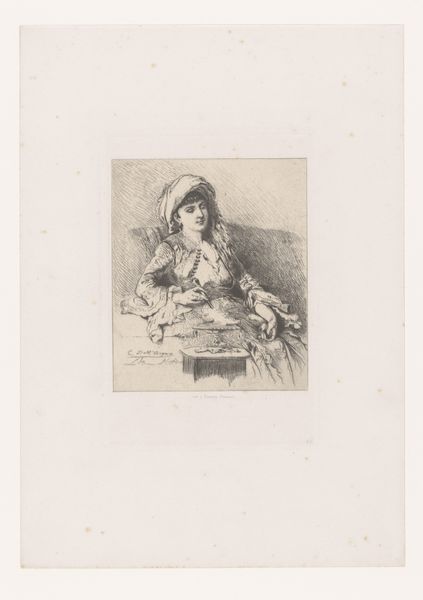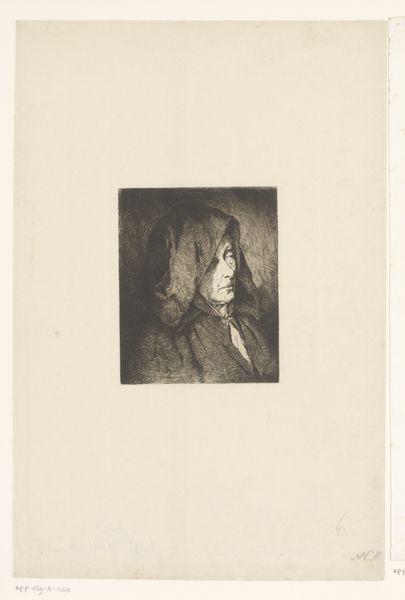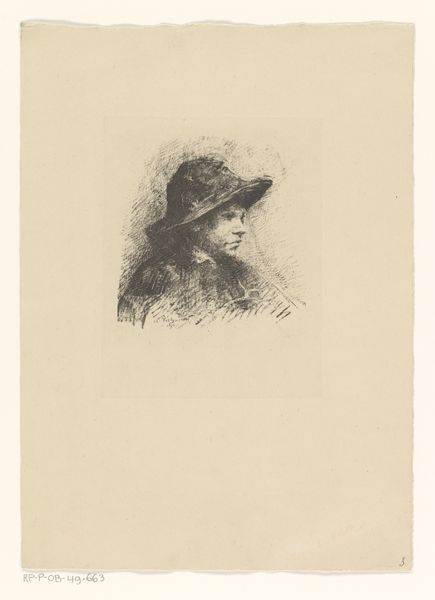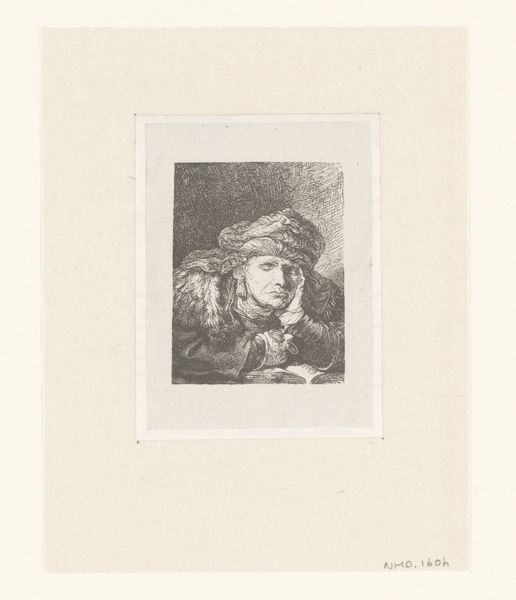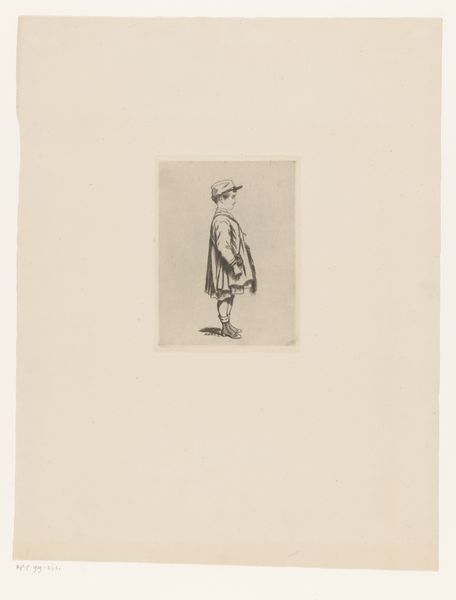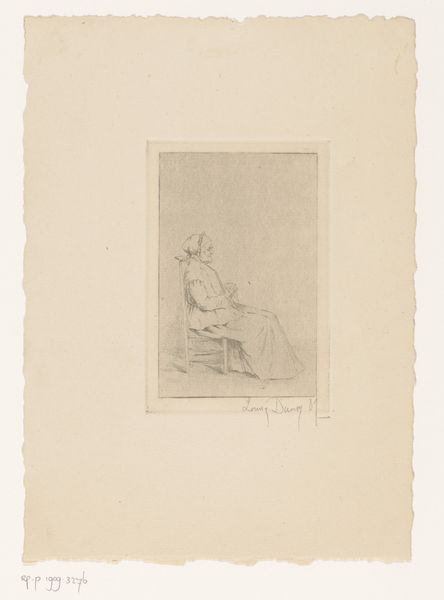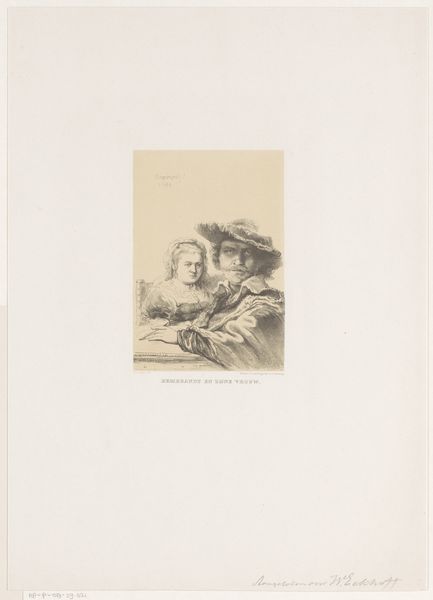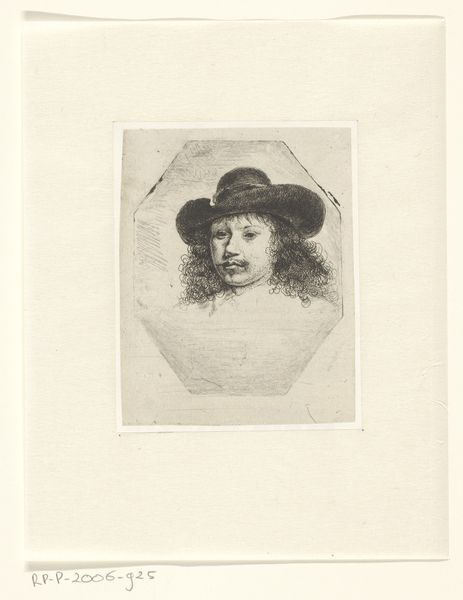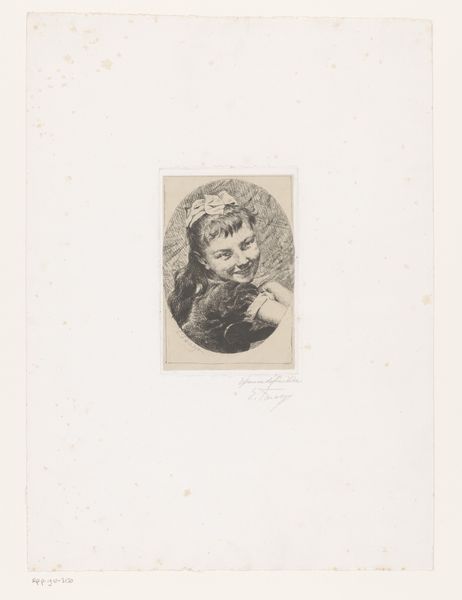
Dimensions: height 176 mm, width 117 mm
Copyright: Rijks Museum: Open Domain
Curator: I'm immediately drawn to the texture – it feels almost photographic despite clearly being an engraving. Editor: That's fascinating. We're looking at "Portret van Cornelis Visscher II," an engraving rendered in ink on paper in 1863 by Joseph Eduard Wessely. Its meticulous linework seems to bridge a gap between artistic media and epochs, doesn’t it? Curator: Absolutely. It makes me think about labor—the sheer amount of time invested in crafting those fine lines. How many hours did it take to produce this image, and who was its intended audience? This form of printmaking was intensely social in its own way. Editor: The subject, Cornelis Visscher II, an engraver himself from an earlier period, becomes doubly fascinating when contextualized. Wessely’s choice of subject is not incidental but instead a statement. It invites discussions about the value of artistry in reproducing images across eras. It certainly asks what happens when artistry becomes about recreating older imagery? Curator: Indeed. Looking closer, I find it quite striking. Consider how access was limited back then – prints such as this acted as vehicles for ideas, ideologies, and aesthetics to a broader public that wouldn't normally engage with that person. In reproducing Visscher’s image, who had influence, control and say of that production? Editor: That reproduction hints at complex intersections of power and influence embedded within artistic legacies, in ways both the materials used, as well as who is in the engraving, carry on social meaning. To make a print about a prominent person, of a particular process, becomes so very weighted by who had control over the whole reproduction chain of the item and the image. Curator: I hadn’t considered the artist’s lineage in such depth. Editor: Nor did I anticipate the complexities arising just from observing an old portrait. It goes to show how a tangible connection with material processes opens many pathways toward interpreting this history.
Comments
No comments
Be the first to comment and join the conversation on the ultimate creative platform.
